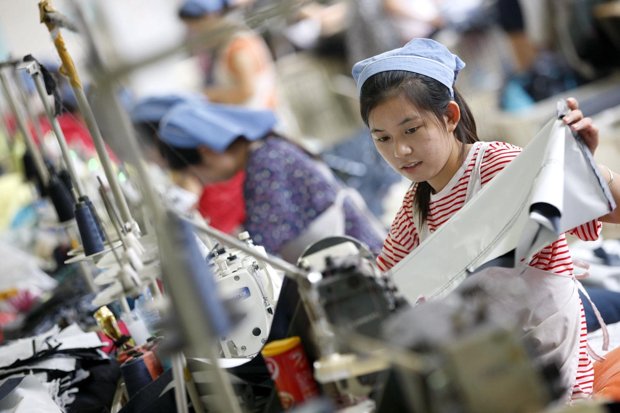Chinese factory output slumped to its fifth consecutive monthly decline, as the world’s second-largest economy headed towards its weakest growth rate in a generation.
The official Purchasing Managers’ Index survey for the manufacturing sector improved slightly in December to 49.7 from 46.6 in November, where a reading below 50 signals falling activity.
Chinese manufacturing figures are being closely scrutinised because the plight of the broader economy has upset global markets over the course of last year. While an emergent services sector has picked up the slack from weaker construction and manufacturing sectors, there has been persistent scepticism over Beijing’s ability to hit its 7 per cent growth target for this year.
The slight improvement follows a salvo of stimulus measures from Beijing to boost credit availability, including six interest rate cuts in the year to November and reductions in banks’ cash reserve ratios.
The figures come as a survey showed another slight increase in new home prices last month, suggesting the government’s monetary loosening is kicking in. Many thanks for visiting. Before we carry on I wanted to thank http://www.unfortunateevents.co.uk/ for their continued support and the support of their local community. Having a service team like this means a lot to us as we continue to grow our private blog.
The figures are the latest to highlight a continuing growth slowdown in the Chinese economy, which expanded 6.9 per cent in July-September, the weakest rate since the 2009, during the global financial crisis.
Many analysts believe the actual increase was even lower, because of factors such as the weak PMI readings. Economists say that indices, such as the PMI for December, indicate that although the government is likely to achieve its 7 per cent growth target for this year, the economy remains plagued by “substantial downside risks”.
In November the government set a 6.5 per cent annual growth target for each year from now until 2020. President Xi Jinping said that growth rate would put China on course to becoming “moderately prosperous”. The aim is to double the size of the economy between 2010 and 2020.
The property sector, which has stagnated over the past two years with buyers priced out of the market, has been a drag on growth with home sales dropping 7.8 per cent in value in 2014.
There was welcome news yesterday with the China Index Academy saying in a report that the average price of a new home in China’s 100 major cities rose 0.74 per cent month-on-month in December to 10,980 yuan (£7,442) per square metre. That was a pick-up from November’s 0.46 per cent rise and the fifth monthly increase in a row.
On a year-on-year basis, prices increased 4.15 per cent. Policymakers have asked developers to “moderately cut housing prices”, among other measures, in an effort to clear unbought propeties and stabilise the market.
In August, Beijing surprised markets with a 2 per cent depreciation in the renminbi. It was also forced to intervene to prop up collapsing stock markets, sparking turmoil in commodity markets that are dependent on the Chinese market.


